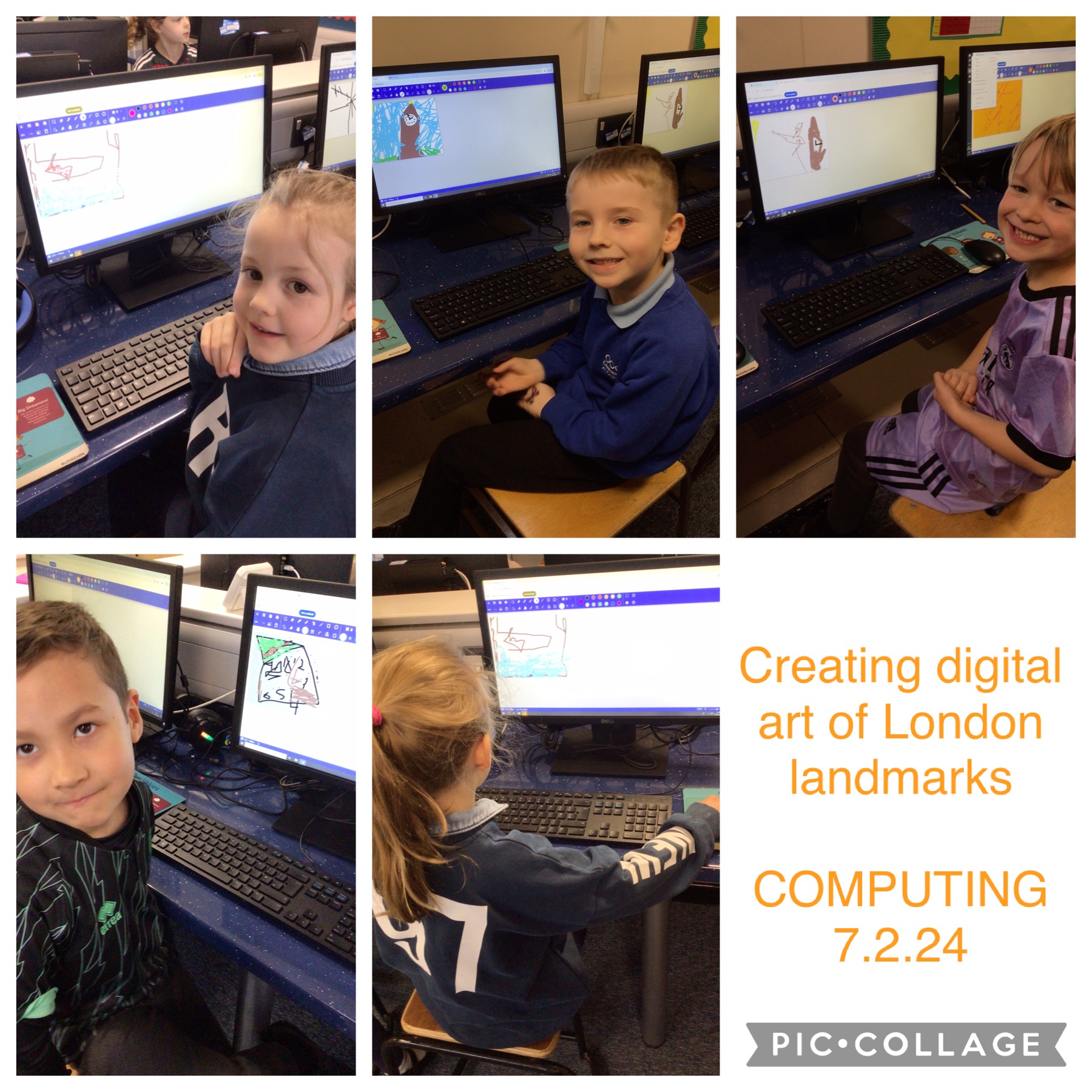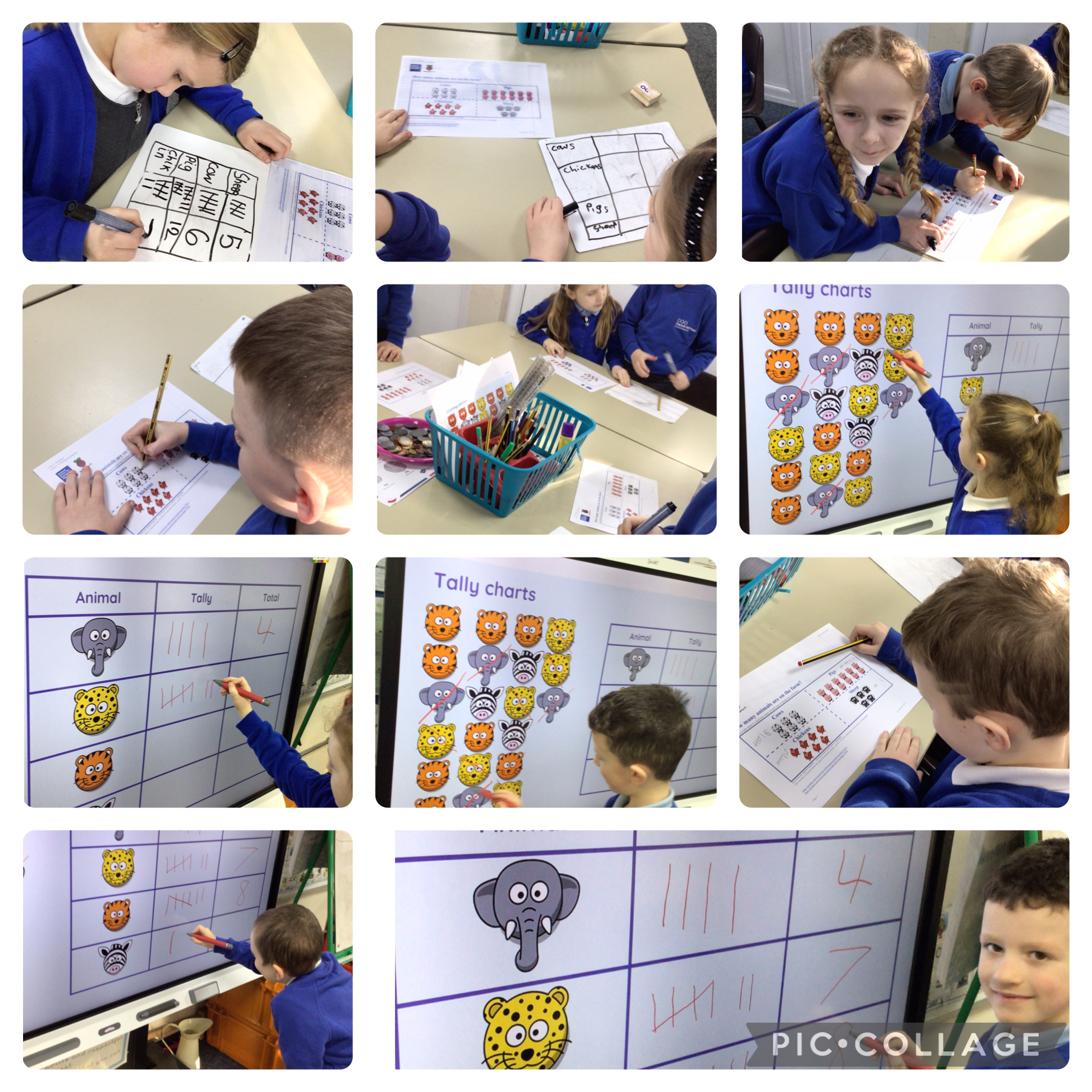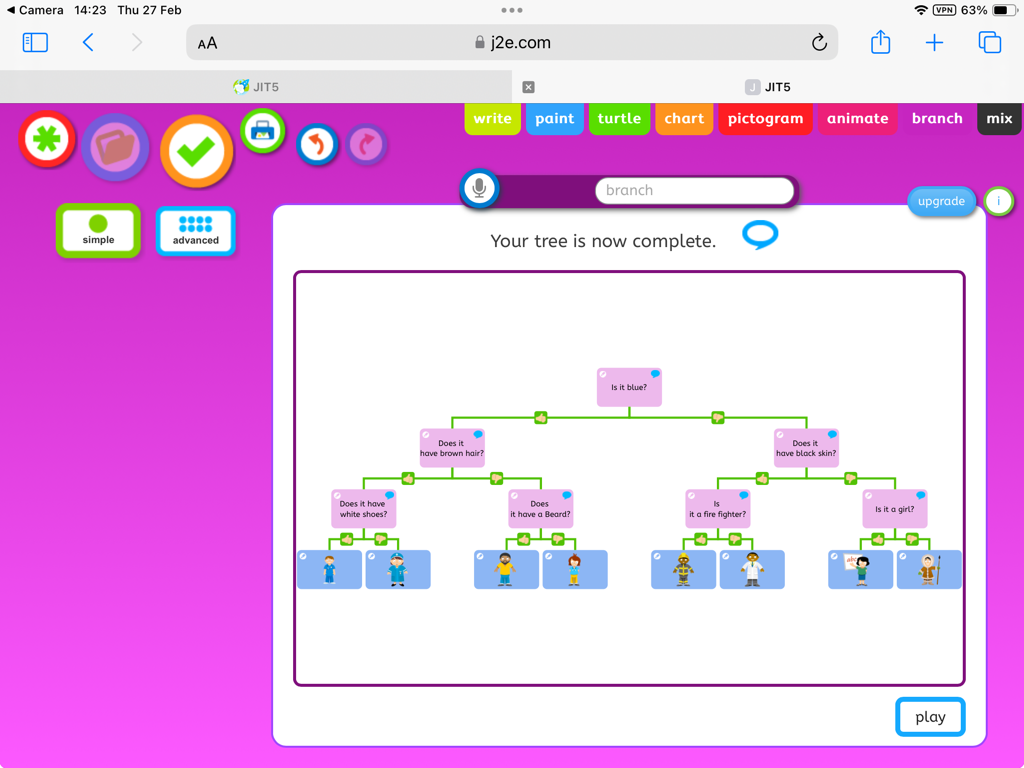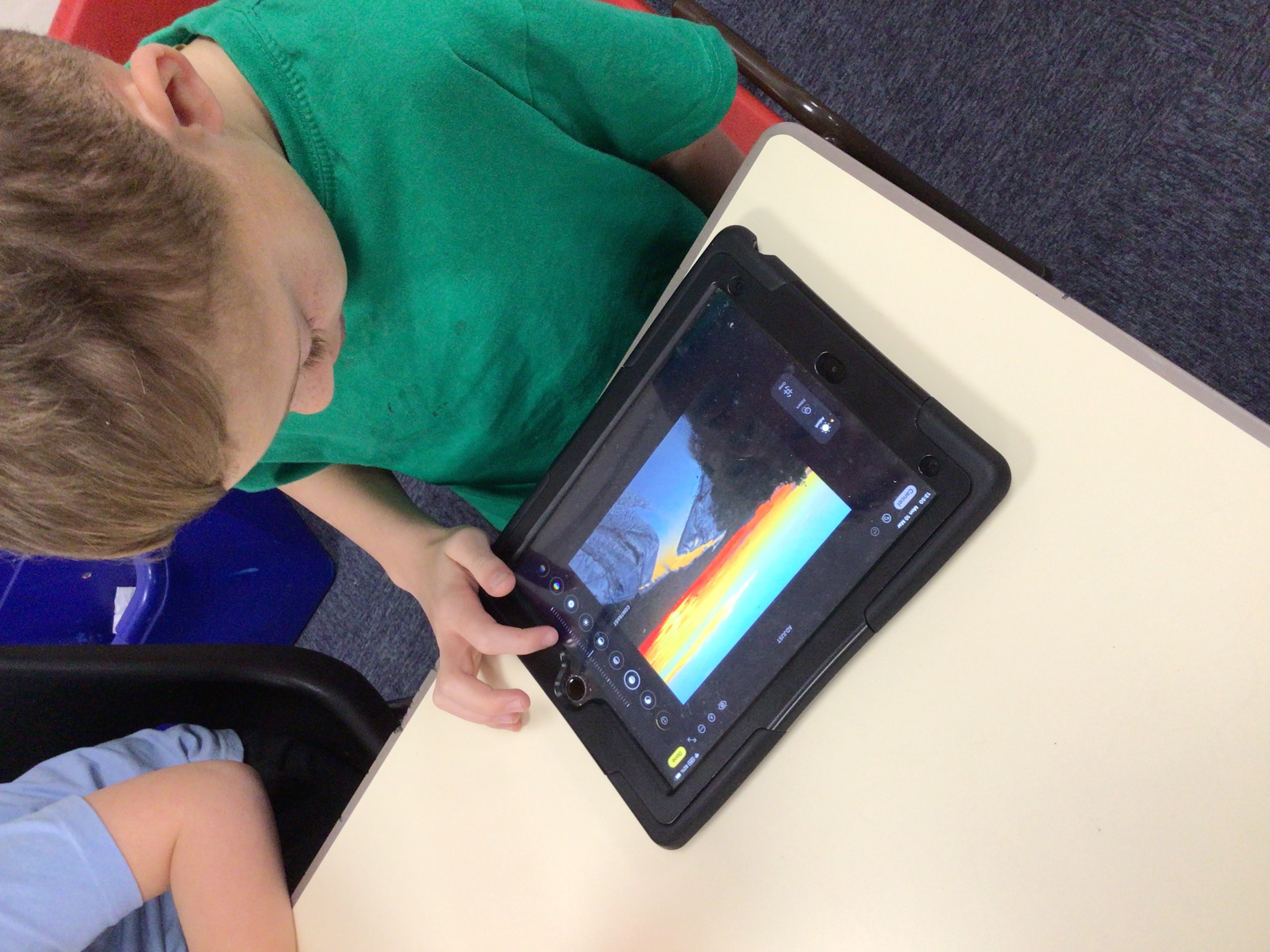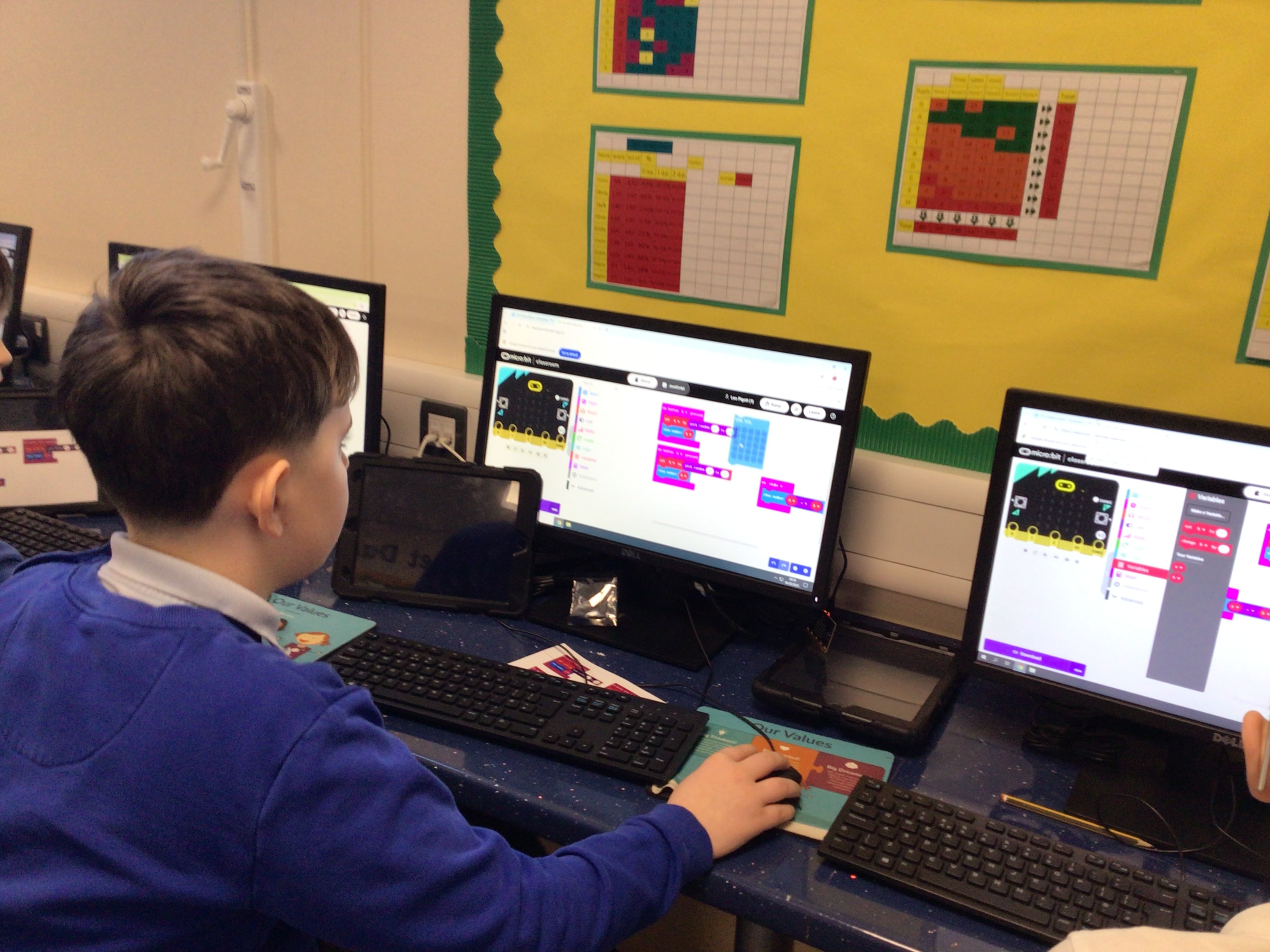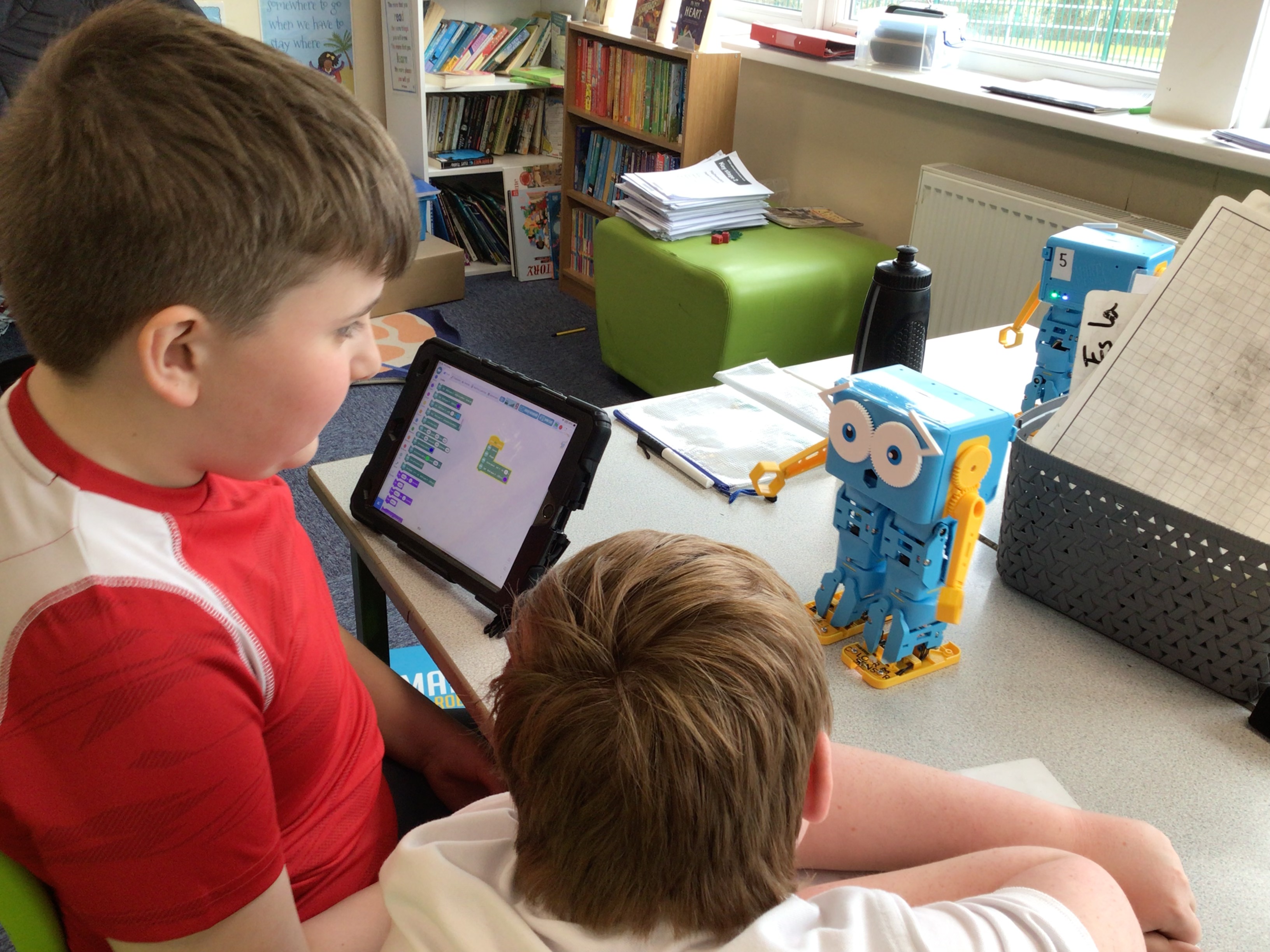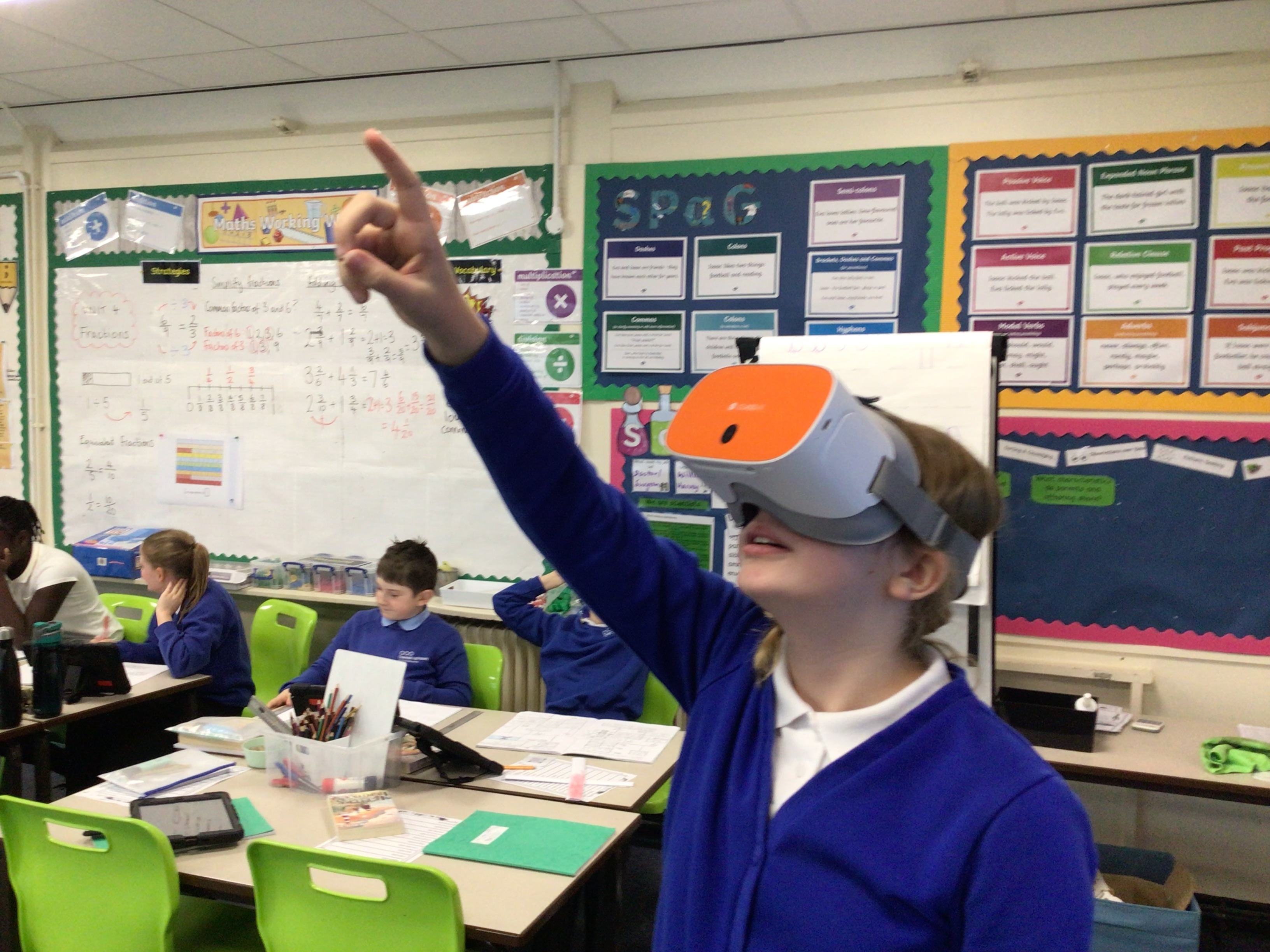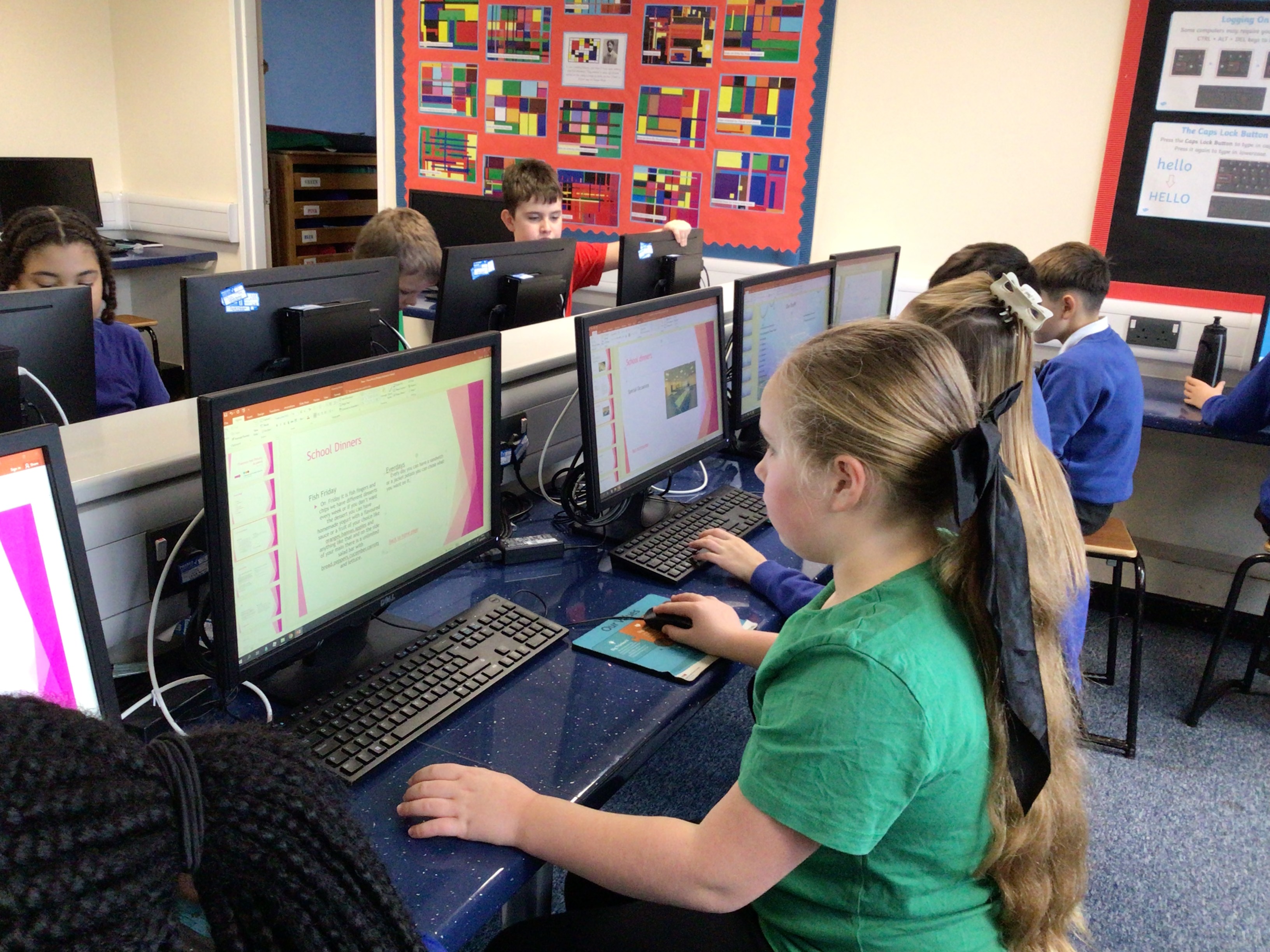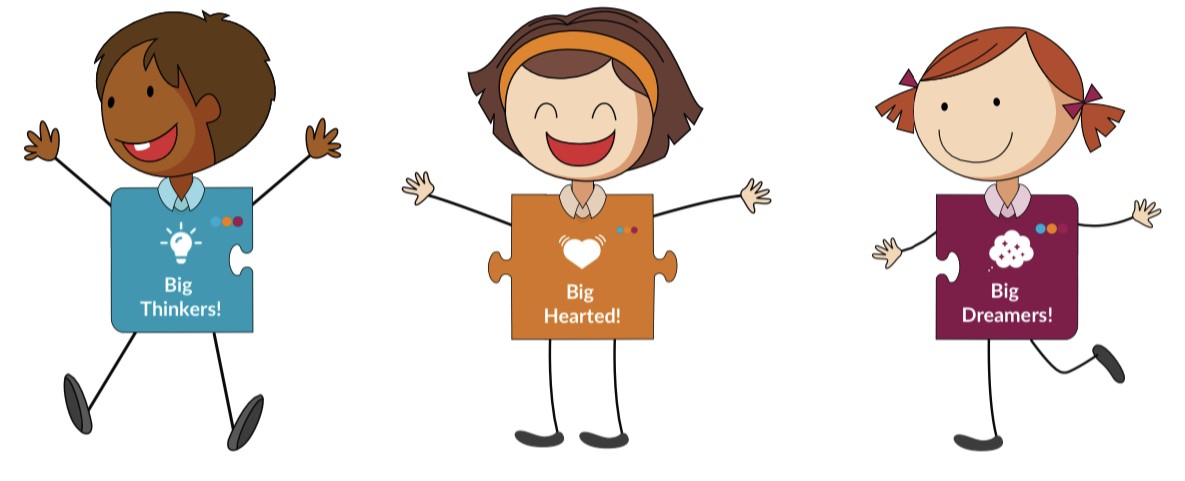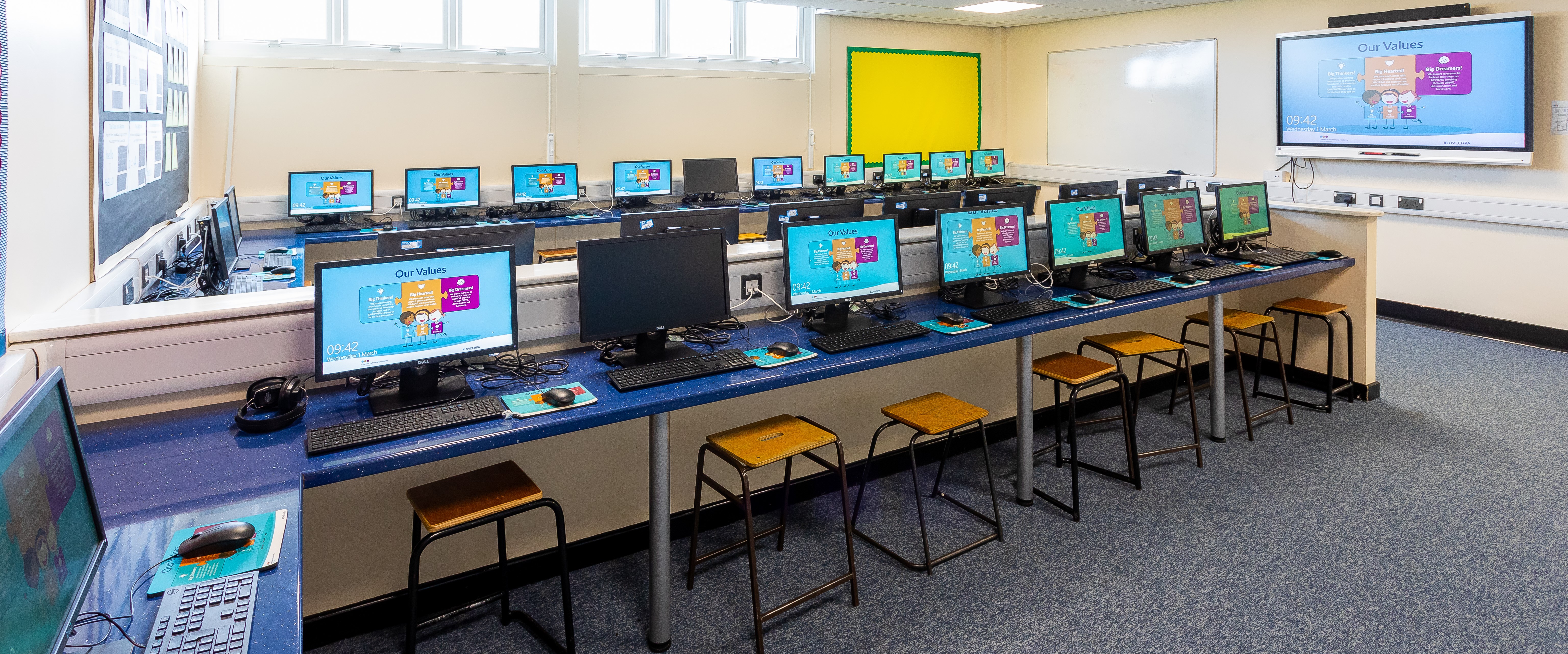Computing & IT Intent, Implementation & Impact
Intent
- Provide an exciting, rich, relevant and challenging Computing curriculum for all pupils.
- Enthuse and equip children with the capability to use technology throughout their lives.
- Give children access to a variety of high quality hardware, software and unplugged resources.
- Teach pupils to become responsible, respectful and competent users of data, information and communication technology.
- Teach pupils to understand the importance of governance and legislation regarding how information is used, stored, created, retrieved, shared and manipulated.
- Equip pupils with skills, strategies and knowledge that will enable them to reap the benefits of the online world, whilst being able to minimise risk to themselves or others.
- Provide technology solutions for forging better home and school links.
- Utilise computational thinking beyond the Computing curriculum.
- Exceed the minimum government recommended/statutory guidance for programmes of study for Computing and other related legislative guidance (online safety).
Implementation
Computing covers the computer science aspects of National Curriculum as well as digital literacy, online safety, computer networks and data and information. This is generally taught as a separate subject using the Teach Computing scheme from the National Centre for Computing Education. Other elements of the wider ICT curriculum, will be taught alongside other curriculum areas, as a part of theme work. This includes Digital Publication and Presentation, Digital Research, Data Handling and the use of Digital Media.
Impact
EYFS Outcomes
We aim to provide our pupils with a broad, play-based experience of Computing in a range of contexts. We believe the following:
- Early Years learning environments should feature ICT scenarios based on experience in the real world, such as in roleplay.
- Pupils gain confidence, control and language skills through opportunities to ‘paint’ on the interactive board/devices or control remotely operated toys.
- Outdoor exploration is an important aspect, supported by ICT toys such as metal detectors, controllable traffic lights and walkie-talkie sets.
- Recording devices can support children to develop their communication skills. This is especially useful for children who have English as an additional language.
Key Stage 1 Outcomes
- Understand what algorithms are, how they are implemented as programs on digital devices, and that programs execute by following a sequence of instructions.
- Write and test simple programs.
- Organise, store, manipulate and retrieve data in a range of digital formats.
- Communicate safely and respectfully online, keeping personal information private, and recognise common uses of information technology beyond school.
Key Stage 2 Outcomes
- Design and write programs that accomplish specific goals, including controlling or simulating physical systems; solve problems by decomposing them into smaller parts.
- Use sequence, selection and repetition in programs; work with variables and various forms of input and output; generate appropriate inputs and predicted outputs to test programs.
- Use logical reasoning to explain how a simple algorithm works and to detect and correct errors in algorithms and programs.
- Understand computer networks including the internet; how they can provide multiple services, such as the world-wide web; and the opportunities they offer for communication and collaboration.
- Describe how Internet search engines find and store data; use search engines effectively; be discerning in evaluating digital content; respect individuals and intellectual property; use technology responsibly, securely and safely.
- Select, use and combine a variety of software (including internet services) on a range of digital devices to accomplish given goals, including collecting, analysing, evaluating and presenting data and information.
Computing Curriculum Information
Computing End Points
Computing vocabulary KS1
Computing vocabulary KS2
Computing Progression of Knowledge & Skills
Computing progression
Computing – Learning in Action
